KATHMANDU: Whether standing atop the majestic Mt. Everest, the roof of the world, or tracing the footsteps of Lord Gautam Buddha in the sacred birthplace of Lumbini, Nepal is a land where spirituality dances in the air.
Even as you trek through breathtaking landscapes or wander the bustling streets of Kathmandu Valley, your senses will be captivated by a vibrant display of prayer flags or ‘Lung Ta’ overhead.
Enter the realm of ‘Lung Ta,’ where every breeze whispers ancient tales, and every fluttering flag is a brushstroke on the canvas of Nepal’s rich heritage.
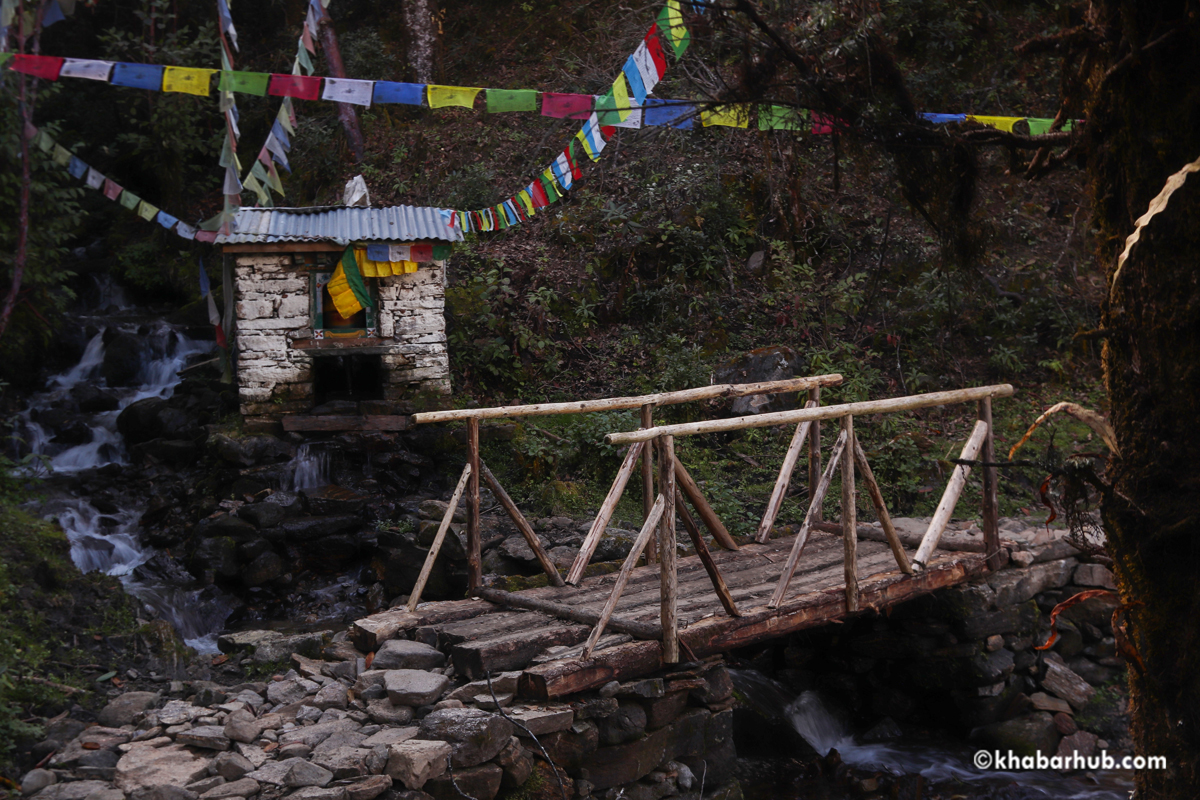
Translating to “Wind Horse” in Tibetan, these colorful prayer flags add a symphony of hues to the country’s spiritual tapestry.
Traditionally adorning stupas, monasteries, and other sacred sites, these prayer flags have transcended their spiritual roots.
Now, they dance not only in the sacred places but also grace private residences, bridges, and roads.
Witness their presence even in the most unexpected corners, as commercial buildings and restaurants embrace their beauty for decorative purposes.

In the realm of Lung Ta, the vibrant prayer flags that adorn Nepal’s landscapes, Khenpo Nima Dondrup Hyolmo sheds light on the significance and proper usage of these sacred symbols.
According to Khenpo Hyolmo, using Lung Ta without proper knowledge and faith serves no purpose.
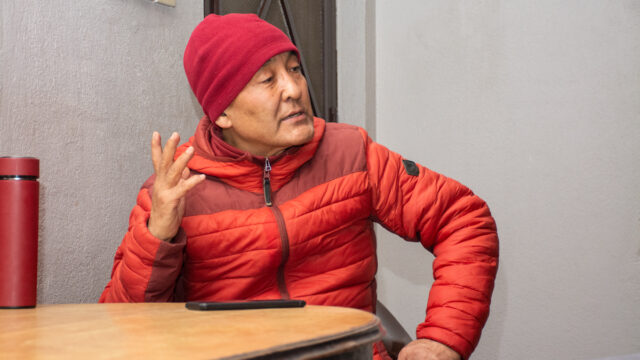
It is crucial to be aware of the mantra inscribed on the flag, as each carries a unique purpose and intention.
Traditionally, Lung Ta is meant to be hung at higher places, ensuring reverence by preventing people from stepping on them.
However, modern observations reveal their presence not only in spiritual locations but also at the entrances of hotels, restaurants, on vehicles, and fluttering alongside roads and bridges.
Khenpo Hyolmo notes that such practices may not align with the essence of religious philosophy.
Despite this, Khenpo acknowledges that individuals may use Lung Ta for protection with faith and belief, emphasizing the importance of not misplacing them.
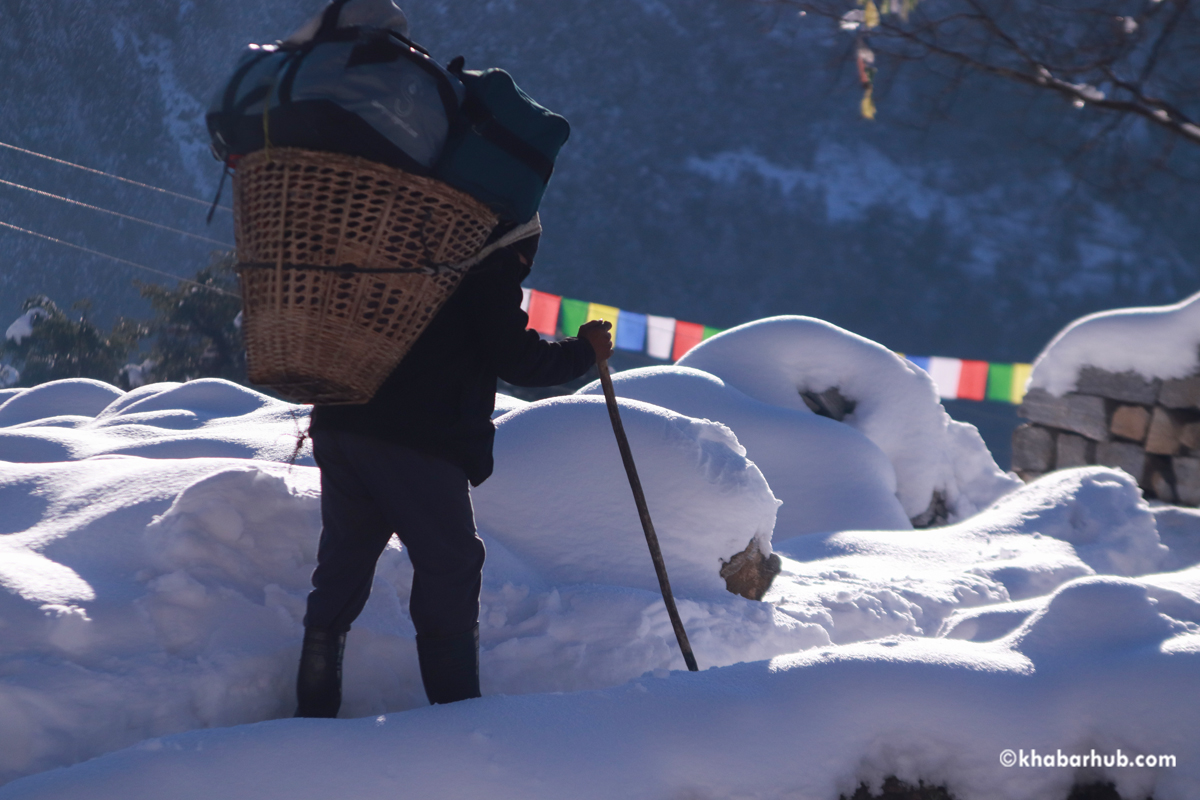
The location where the prayer flags are hung symbolizes the respect and reverence one has for the sacred tradition.
The purpose behind hanging Lung Ta varies, ranging from seeking the removal of obstacles to addressing health concerns.
Different mantras are meticulously printed on the flags to serve these specific purposes.

Crucially, Lung Ta’s efficacy depends on the integrity of the printed words. As long as the mantras remain intact, the prayer flags fulfill their purpose.
However, once they are damaged, Khenpo suggests either placing them where no one can reach or burning them, respectfully depositing the ashes in sound places.
Burning Lung Ta becomes a matter of sin only when the mantras are still intact, highlighting the sacred nature of the printed words.

Additionally, specific times and dates are considered auspicious for hanging Lung Ta.
The mantra on the flag dictates whether the day aligns with the intended purpose.
For example, a Lung Ta designed to increase lifespan should be hung on an auspicious day for the individual.
Consecration of Lung Ta is recommended whenever possible before placing them in specific locations, ensuring a sacred connection between the prayer flags and the environment.
A Symphony of Colors and Symbolism
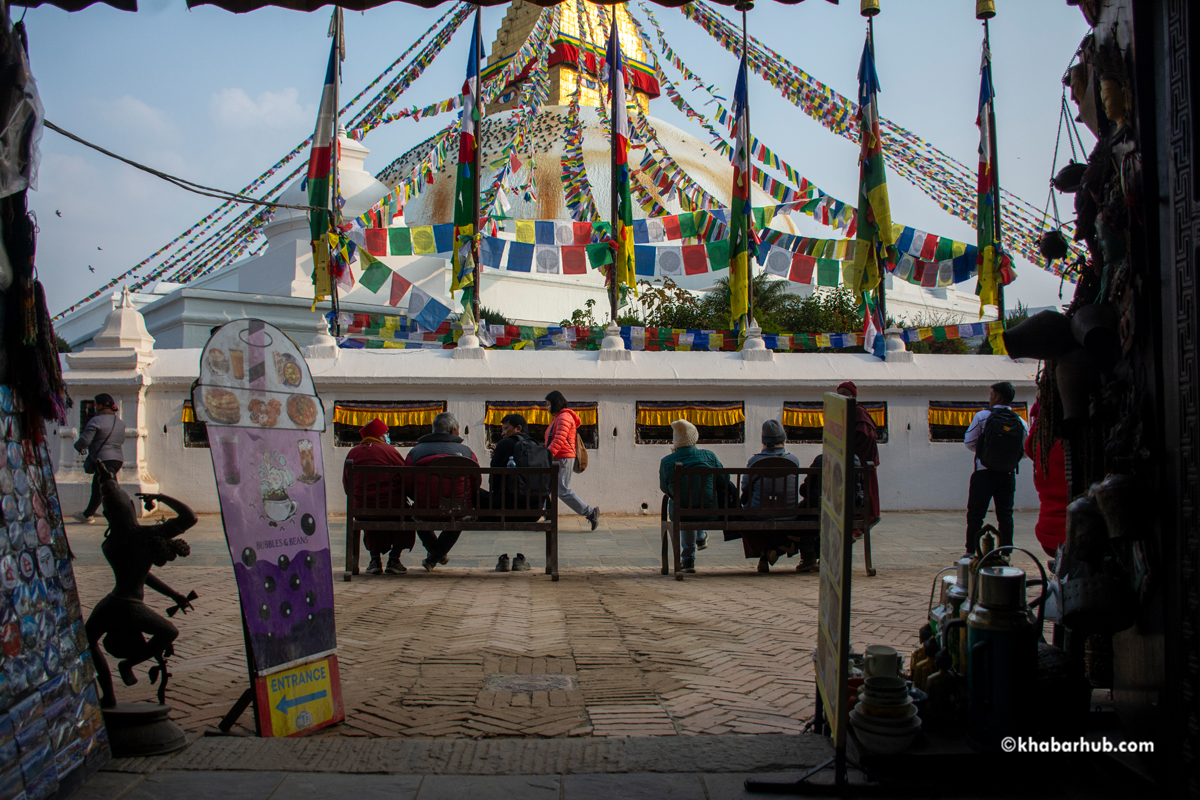
In the enchanting world of Lung Ta, where vibrant prayer flags dance in the Himalayan breeze, each flutter unveils a tale of ancient wisdom and profound symbolism.
These rectangular flags, designed for horizontal placement, come in sets of five, each meticulously arranged in a specific order: blue, white, red, green, and yellow.
These five hues transcend mere colors; they embody the essence of the five main directions—north (green), south (yellow), east (white), west (red), and center (blue).

Delve deeper into the tapestry of symbolism, where each color carries a unique significance.
It is commonly believed that the blue flag, representing the sky or heaven, symbolizes purity and healing.
The white flag, symbolizing air, turns ignorance into light, while the red flag, embodying fire, fuels our endeavors with energy.
The green flag, reminiscent of nature or the flow of water, dispels jealousy.
Finally, the yellow flag symbolizes earth, collectively embodying the essential balance of our minds.
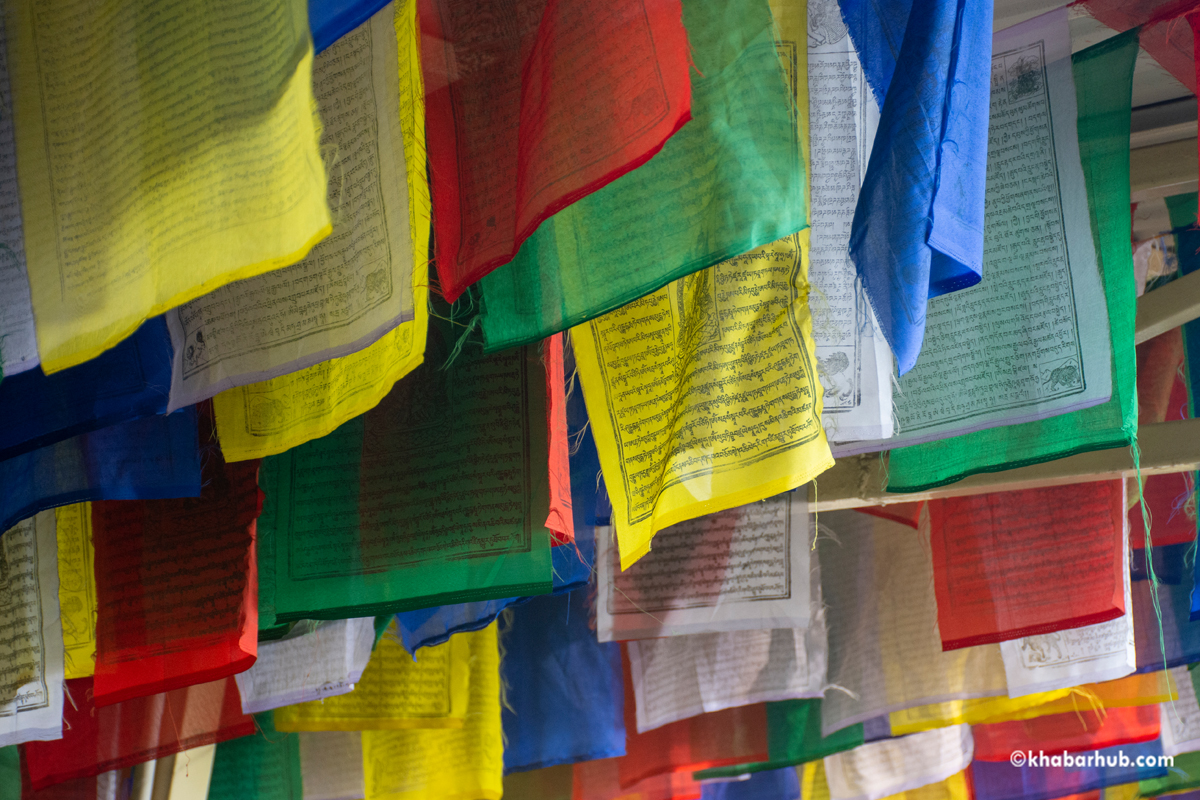
In the intricate world of Lung Ta, where vibrant prayer flags flutter with purpose, Khenpo Hyolmo emphasizes the profound significance of mantras over colors.
Khenpo Hyolmo dismisses the notion that colors hold paramount importance in Lung Ta.
Instead, he underscores that the true essence lies in the mantras inscribed on the flags.
These mantras dictate the purpose of each flag, ranging from wish-fulfilling prayers to mantras aimed at removing obstacles or increasing luck.
The distinction of a genuine Lung Ta, according to Khenpo Hyolmo, lies in the presence of specific mantras like Gyalzen Chemu, the victorious banner.
At the core of Lung Ta is the image of a potent wind horse adorned with flaming jewels or three ratnas.
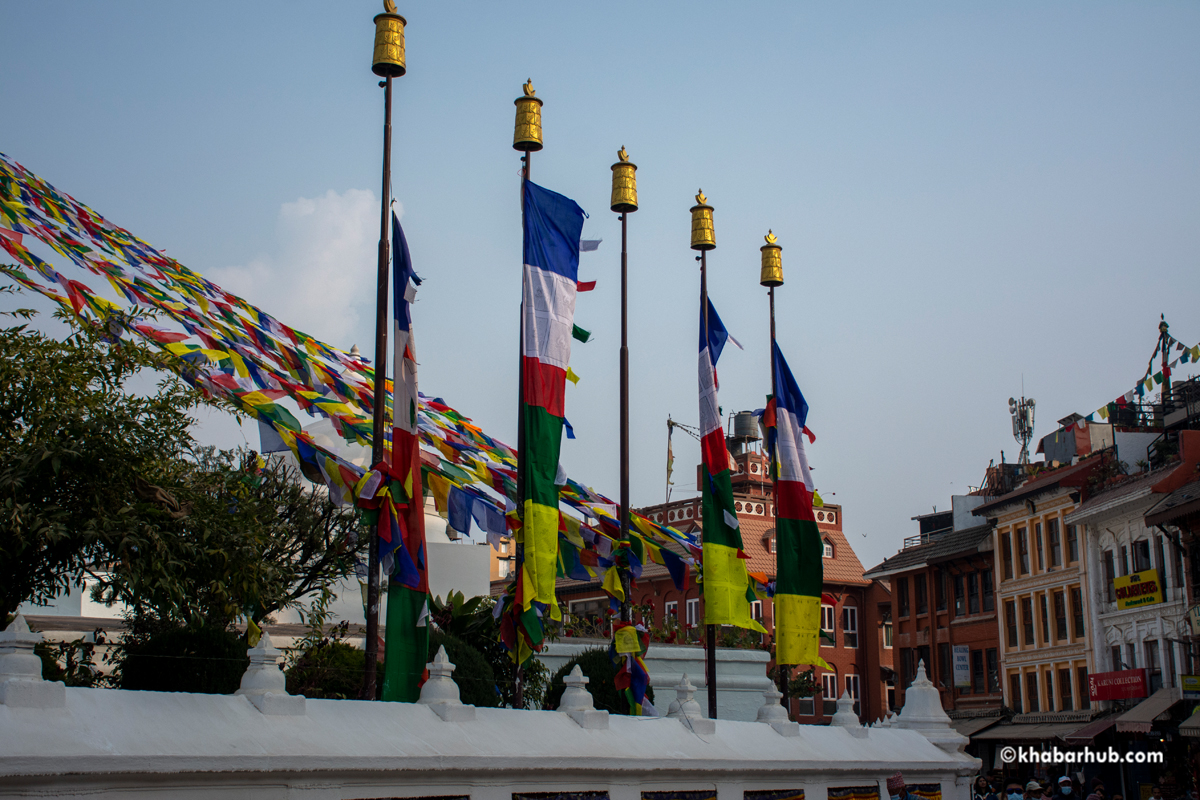
In variations, this central horse may be replaced by symbols such as a tiger, lion, dragon, or garuda.
Khenpo offers a unique perspective, suggesting that the horse symbolizes the speed at which the flag fulfills its intended purpose, whether it be enhancing luck or facilitating healing.
However, Khenpo raises concerns about the commercialization of Lung Ta. He notes the prevalence of various mantras, including teachings of Buddha such as Pratimoksha Sutra, in prayer flags.
He cautions that these flags, laden with diverse mantras, cannot be classified as authentic Lung Ta.
Each prayer flag, he asserts, possesses its own distinct specialty and importance.
As he delves into specifics, Khenpo clarifies that prayer flags like Samba Lindup, Barjey Lham-sol, and Bajra Guru do not fall under the category of Lung Ta.
This discernment highlights the nuanced nature of Lung Ta, where authenticity is paramount, and the underlying mantras hold the key to their spiritual essence.
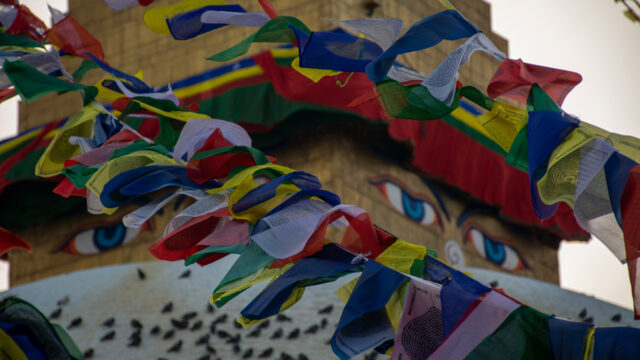
Lung Ta’s enchantment doesn’t end there. Enter “Dar Cho,” another variant designed for vertical placement.
This composition mirrors the same five colors, intertwining symbolism and spirituality.
While anyone can hang these flags, the key lies in respecting them, knowing their purpose and auspicious time to hang it, according to Khenpo.

Buddhists believe that Lung Ta flags emit positive energy, propelled by the wind to bring happiness and well-being to all. Lung Tas are meant to purify the environment around them.
In the dance of Lung Ta, every flutter tells a story, every color narrates wisdom, and every breeze carries the whispers of ancient prayers.
Photos: Khabarhub Photojournalist Chirayu Shakya









Comment